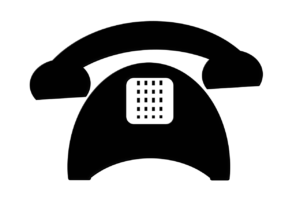 It can feel an awful lot like truly understanding and achieving a patient’s esthetic smile goals is impossible. The challenge is in asking the right question so that you can give the best information to the lab.
It can feel an awful lot like truly understanding and achieving a patient’s esthetic smile goals is impossible. The challenge is in asking the right question so that you can give the best information to the lab.
Patients who want esthetic changes almost always have a picture in their mind of what they hope their teeth will look like. The problem is that they can’t usually articulate what that will look like.
You have to interpret their “I don’t know what I want” or “I’m not sure how to explain what I want” into parameters you and the lab can use. Essentially, the patient’s language for describing the esthetics of teeth is completely different than yours.
The 2 Greatest Struggles of Understanding a Patient’s Esthetic Smile Goals
Patients feel very strongly about the beauty of their teeth. To live up to their expectations, you have to finagle your way into some kind of common ground on these two aspects:
1. Color
One big sticking point in the patient v. dentist esthetic discussion is color. Patients have trouble articulating the shade they want. They say they want their teeth lighter, but not super bright or ‘Hollywood.’ These are statements that leave you guessing because the patient doesn’t speak in the language of shades that a dentist does.
 Also difficult to remedy is the issue that people always think their own teeth are actually darker than they are.
Also difficult to remedy is the issue that people always think their own teeth are actually darker than they are.
2. Contour and Arrangement
Considerations of size and shape can be even more of a headache. Patients look at someone else’s teeth, like a movie star or a picture from a magazine, and say, ‘This is what I’m going for.’ The second you take a look, though, you know it’s not an ideal they can reach.
Sometimes they want a contour and arrangement for their top teeth that you can’t do because it doesn’t work for their occlusion. The teeth they admire wouldn’t realistically fit in their head.
Asking the Right Question for the Best Outcome
 The best way to muddle through a patient’s esthetic smile goals is to ask the right question at the outset.
The best way to muddle through a patient’s esthetic smile goals is to ask the right question at the outset.
Avoid asking: “What would you like your teeth to like when you’re done?”
It’s much easier to have the conversation: “What don’t you like about how your teeth look now?”
This will make a world of difference when you then have to communicate your patient’s esthetic preferences to the lab.
How to Communicate a Patient’s Goals to the Lab
It’s our job to communicate to the lab what the patient wants. Think of it like playing the telephone game. The discussion gets altered every time it gets translated and re-interpreted.
Even with the right question, we might have only an average grasp of what the patient wants. Now, you have to describe their esthetic goals again in your own words. Plus, the lab technician will never hear the original conversation or see the patient.
 The solution is to think visually rather than orally. The less words and the more photography you use, the fewer problems there are. If patients give you photographs of other people’s teeth, like relatives or stars, pass those along to the lab. You’ll want to send them plenty of photos for reference.
The solution is to think visually rather than orally. The less words and the more photography you use, the fewer problems there are. If patients give you photographs of other people’s teeth, like relatives or stars, pass those along to the lab. You’ll want to send them plenty of photos for reference.
You should also do a mock up or patient-approved provisionals. That way, you can take the lab’s wax up (which will be as close an approximation to the patient’s esthetic preferences as possible) and work with your patient to either change the provisionals or the mock up in their mouth using the same ideal question.
Then, you can document those changes, and now the lab can copy something the patient has already lived with. It’s no longer a guess.
How do you work with your patients to achieve their esthetic goals? Let us know your thoughts in the comments!


